Aurora is a network, compatible with Ethereum smart contracts and running on top of Near Protocol.
Its mainnet launched in May 2021 and Aurora has already managed to attract hundreds of dev teams to build protocols on top of it. The combination of Near’s scalability and Ethereum’s dev tooling is an attractive proposition. Yet among many Web3 folks, Aurora is not as well known as some of the older Layer-1 networks.
It’s time to change this.
In this post, we outline what Aurora is, explore its DeFi ecosystem works, and show how you can start using Aurora with Zerion Wallet.
What is Aurora?
Aurora is a solution for executing Ethereum smart contracts on the Near blockchain.
You can think of Aurora as a Layer-2 network on top of Near (a Layer-1). Unlike Near, Aurora is EVM-compatible. This means developers can write smart contracts in Solidity and easily port existing Ethereum applications.
At the same time, Aurora inherits the scalability and speed of Near Protocol:
- $0.02 average transaction fee
- 2-second transaction finality
- 50x transactions per second compared to Ethereum 1.0
Aurora is governed by the AuroraDAO. It’s a decentralized organization that has a Council, which acts as a board of directors and votes on key decisions. Initially, this council consists of Aurora Labs and its key investors and partners. Holders of $AURORA crypto will be able to vote on who is in the Council.
To pay gas fees on Aurora you need ETH. Aurora automatically handles the gas payments in NEAR tokens on the underlying Near blockchain. You can bridge ETH using the official Rainbow Bridge by Near or any other protocol — Zerion can help you find the best bridge.
The already low fees on Aurora can go to zero for those who sign up for Aurora Plus.
Aurora Plus is a program that gives up to 50 free transitions per month, an opportunity to stake AURORA tokens, earn ecosystem rewards, and more. Launched in mid-May, it looks like Aurora Plus has already spurred the growth in the total number of unique addresses — to over 4 million.
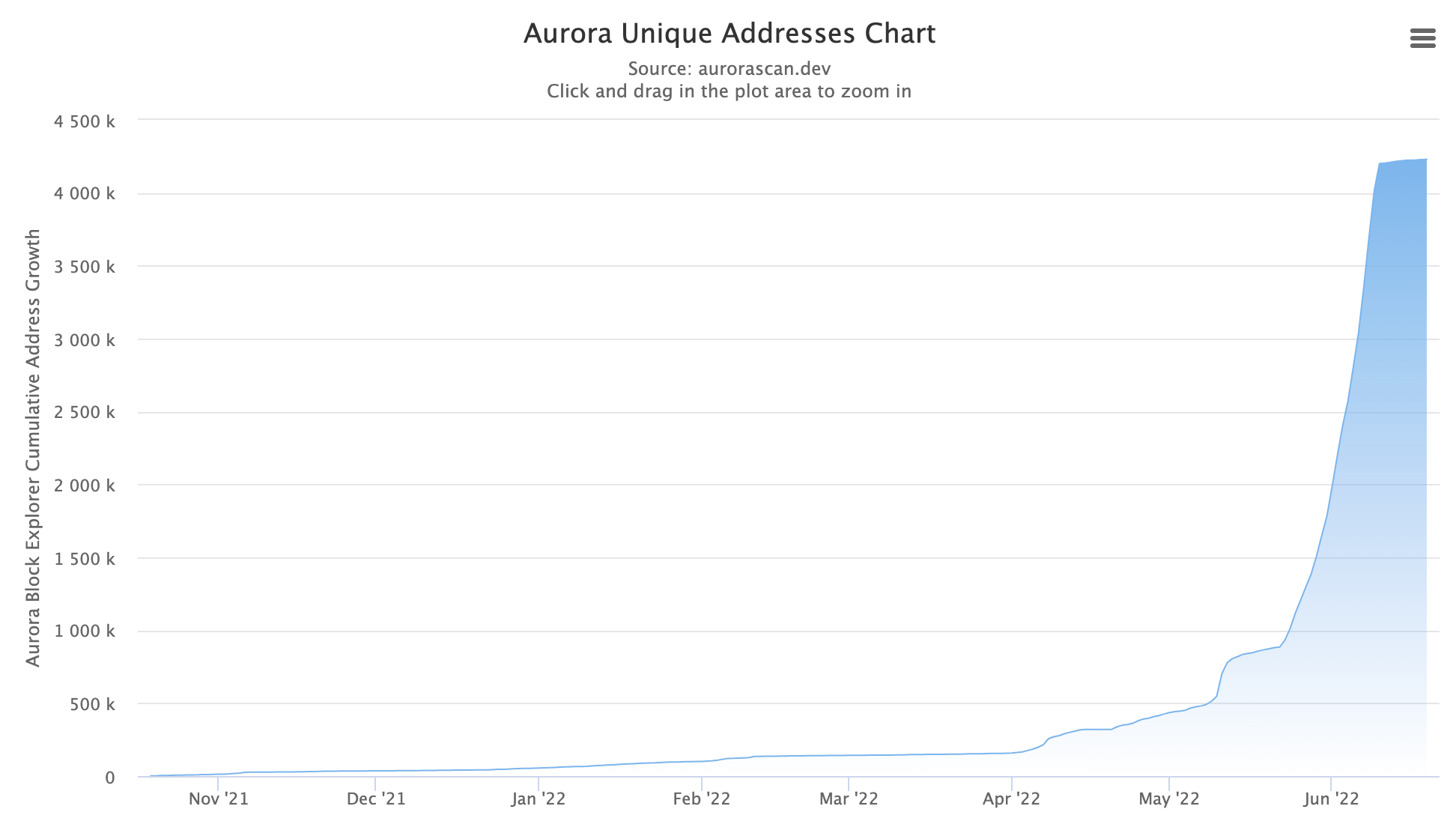
Now let’s see what you can do on the Aurora network.
DeFi on Aurora
In just over a year since its mainnet launch, Aurora reached a total value locked (TVL) of over $275 million across hundreds of protocols.
It’s only the beginning. In May, Aurora allocated 25 million $AURORA tokens to development grants for building DeFi protocols on top of it.
Bastion
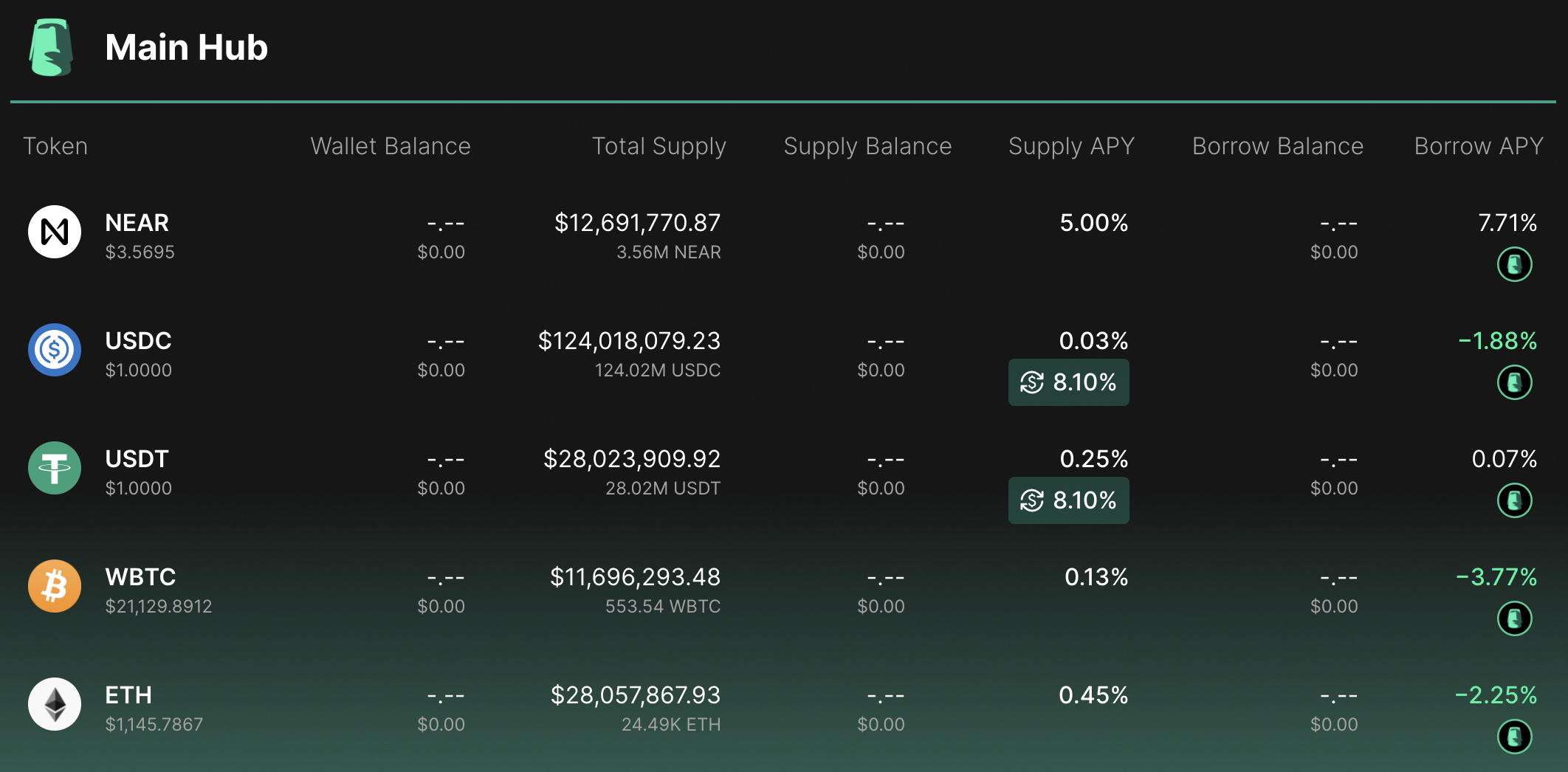
A lending and stablecoins swap, Bastion seeks to be the liquidity foundation of Aurora.
Today, with Bastion you can:
- Lend and borrow NEAR, USDT, USDC, WBTC, and ETH. Borrowing is incentivized with BSTN liquidity mining rewards, effectively creating negative yields (i.e. get paid to borrow).
- Swap USDT, USDC, NEAR, staked NEAR, cUSDT, and cUSDC — the Bastion-locked coins.
- Provide liquidity in cUSDT and cUSDC and get fees and rewards in BSTN.
- Stake BSTN to get rewards in NEAR and BSTN.
Trisolaris
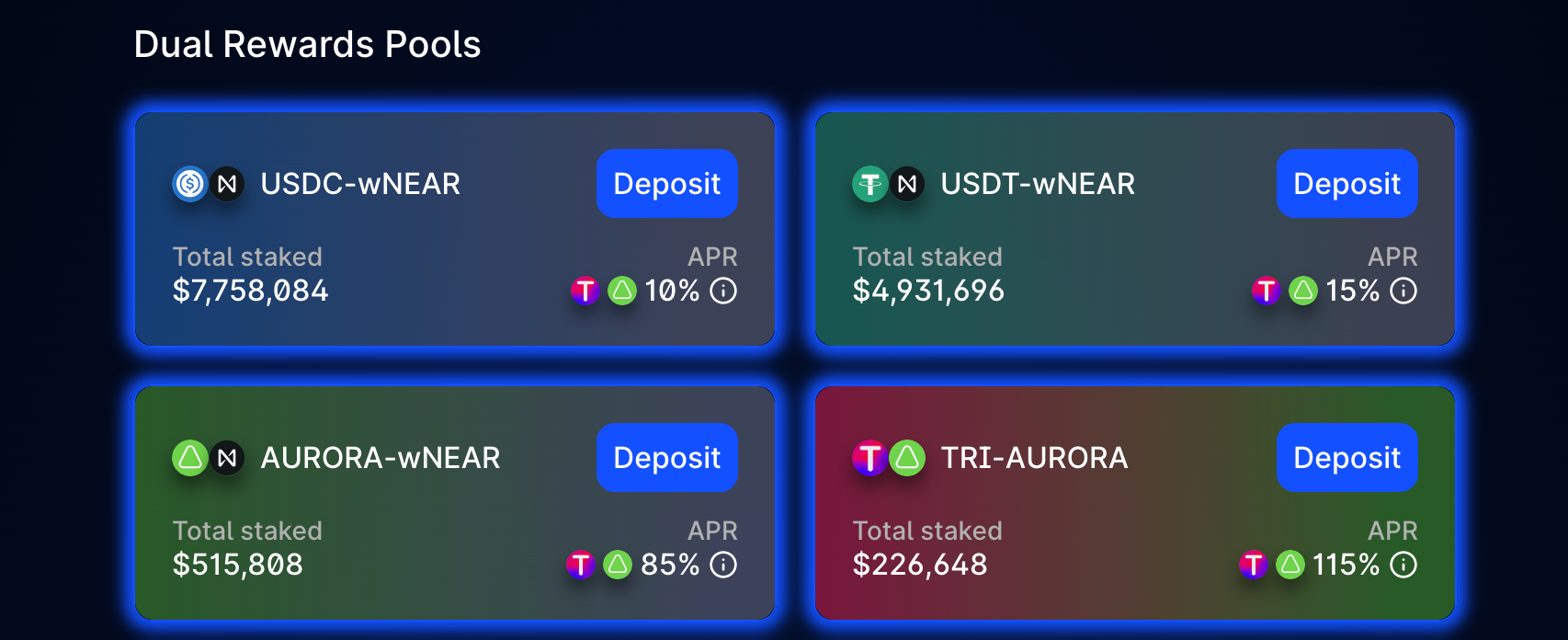
A DEX with incentivized farming pools, Trisolaris is the most popular exchange on Aurora.
Trisolaris charges 0.3% swap fees. Of that, 0.25% goes to liquidity providers and 0.05% is used to buy USD 3pool LP tokens, which are distributed as rewards to all stakers of TRI, the governance token.
Here is what you can do with Trisolaris:
- Swap any tokens on Aurora
- Provide liquidity in any pair and earn dual rewards
- Stake TRI to earn rewards as USD 3pool LP tokens
- Stake your LP tokens to earn yield farming rewards in TRI, AURORA, NEAR, and various protocol tokens. For USD 3pool, farming rewards are 15% and for riskier pools yields are in double or even triple digits.
Aurigami
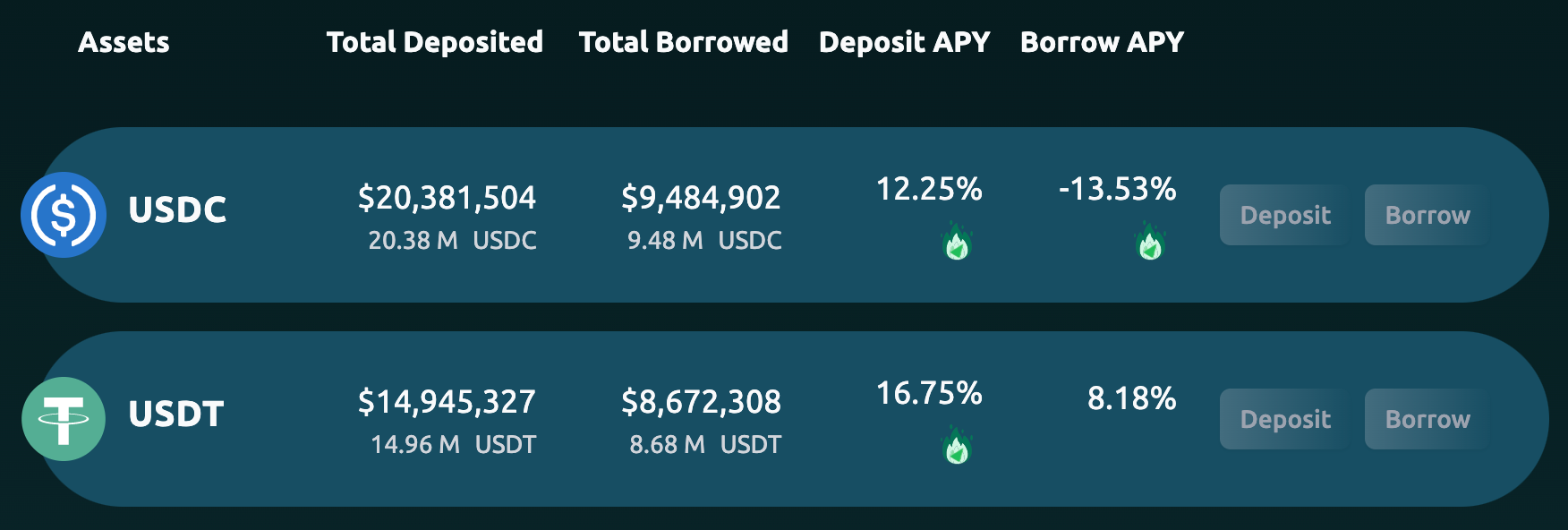
Aurigami is a decentralized liquidity protocol with liquidity mining rewards.
Launched in March 2022, Aurigami completed an Initial Exchange Offering and kept 40% of its PLY governance token for liquidity mining to attract both lenders and borrowers.
Aurigami supports all major tokens on Aurora with double-digit APYs as rewards in PLY tokens:
- USDT
- USDC
- USN, Near’s algo stablecoin
- ETH
- WBTC
- STNEAR (staked NEAR) and WNEAR (wrapped NEAR)
- AURORA
- TRI
Besides its PLY token, Aurigami has PULP, a maturing token. With time, this token can be transformed into PLY, like a voucher for PLY in the future. It’s like a game where participants can choose between claiming early for a smaller reward or waiting longer for a higher reward.
Polaris Finance
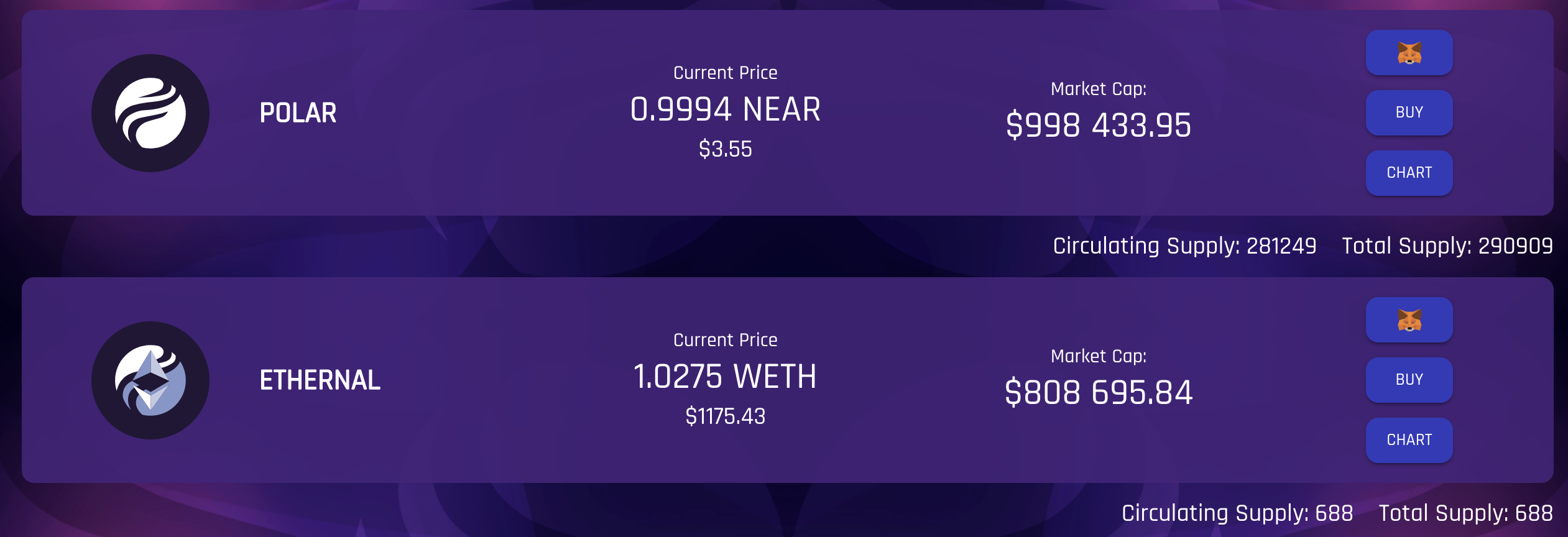
A fork from Fantom’s Tomb.finance, Polaris is an algorithmic coins ecosystem on Aurora and Near.
Polaris’ algocoins are not pegged to fiat and are instead seek to mirror the prices of various assets:
- POLAR mirrors the price of NEAR
- ETHERNAL mirrors WETH
- ORBITAL mirrors WBTC
- TRIPOLAR mirrors TRI
POLAR Shares ($SPOLAR) is the protocol’s main token that can be deposited in the so-called ‘Sunrise’ rooms to mint the respective algo tokens associated with the room. For example, by depositing SPOLAR to the ETHERNAL Sunrise, you can mint ETHERNAL.
The algo coins are not backed by anything and instead maintain their prices through the algorithm.
The key element to maintaining the peg is the concept of BOND assets. Any pegged asset is under the peg, it can be burned in exchange for BOND. This removes the excess supply. Later, when the peg is restored, BOND can be redeemed for the pegged asset.
NearPAD
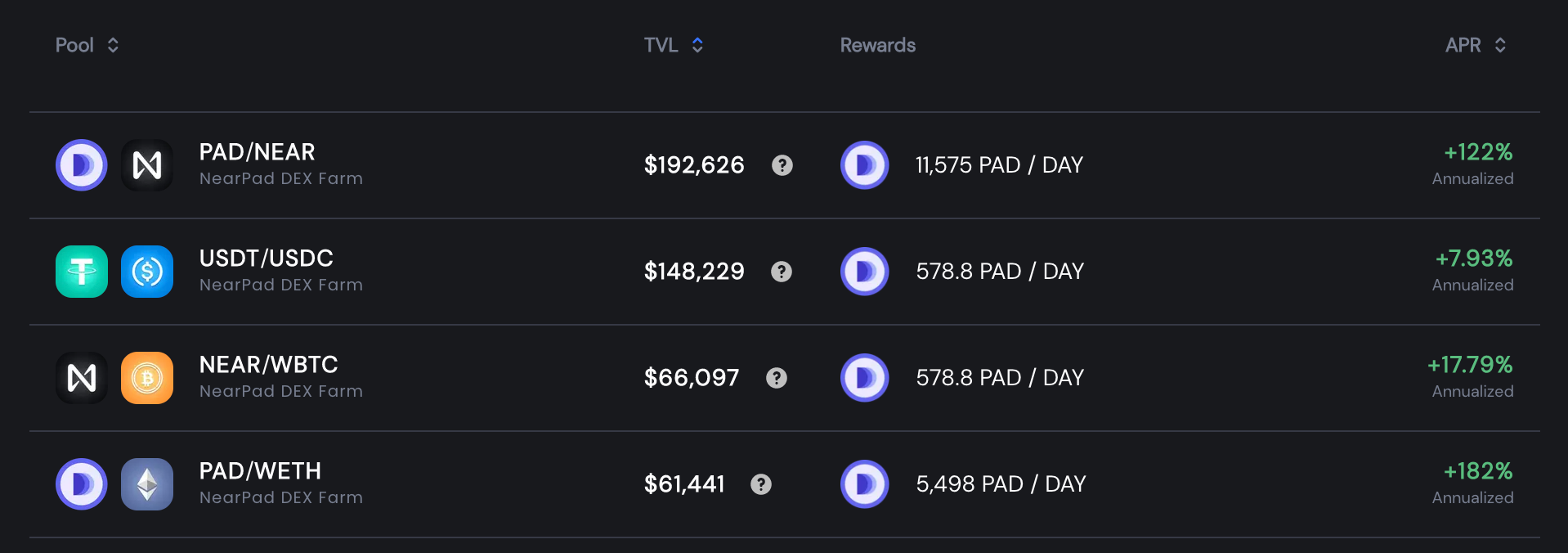
A launchpad and DEX, NearPAD helps to launch and bootstrap new projects on Near and Aurora.
The launchpad acts as a platform for Initial Exchange Offerings (IEO). Projects can offer pools of new coins for sale. Users can buy allocations by paying for new tokens in USDT.
The DEX provides liquidity to all tokens issued on the launchpad. Most pairs with new tokens have liquidity farming programs with triple-digit APYs.
For every swap on the DEX, 0.05% of the fees are sent to stakers of $PAD. When PAD is staked, you get iPAD, a token that gives voting rights. iPAD is similar to staked Sushi (xSUSHI): it’s tradable and is continuously compounding. So when you unstake iPAD, you receive the original PAD and accumulated fees.
Besides these native DeFi protocols, Aurora is also supported by a growing number of multichain dapps that started on Ethereum.
Multichain DeFi protocols on Aurora
On Aurora, you’ll encounter some familiar DeFi protocols.
Here’s an incomplete list of multichain protocols that support Aurora:
- Curve — the biggest stablecoins DEX has a 3pool (USDT, DAI, USDC) on Aurora. However, liquidity is low, perhaps because currently there are no incentives in form of CRV emissions.
- Pickle Finance — the yield aggregator has a lot of pools from Trisolar and other Aurora DEXes. Relatively small pools, additional PICKLE rewards, and frequent compounding produce high APYs.
- Beefy Finance — another yield aggregator that helps to compound yield farming pools. Alternatively, you can buy and stake BIFI on Aurora to earn a share of the platform’s fees.
DeFi tracking on Aurora
If you provide liquidity, yield farm, or do anything else in DeFi, you need an opportunity to track your positions.
That’s where Zerion Wallet for Aurora shines.
Zerion automatically finds all positions locked in various protocols. For example, if you provide liquidity on DEXes, Zerion will list how much of each asset you currently have. It will also list the pending rewards that you can claim.
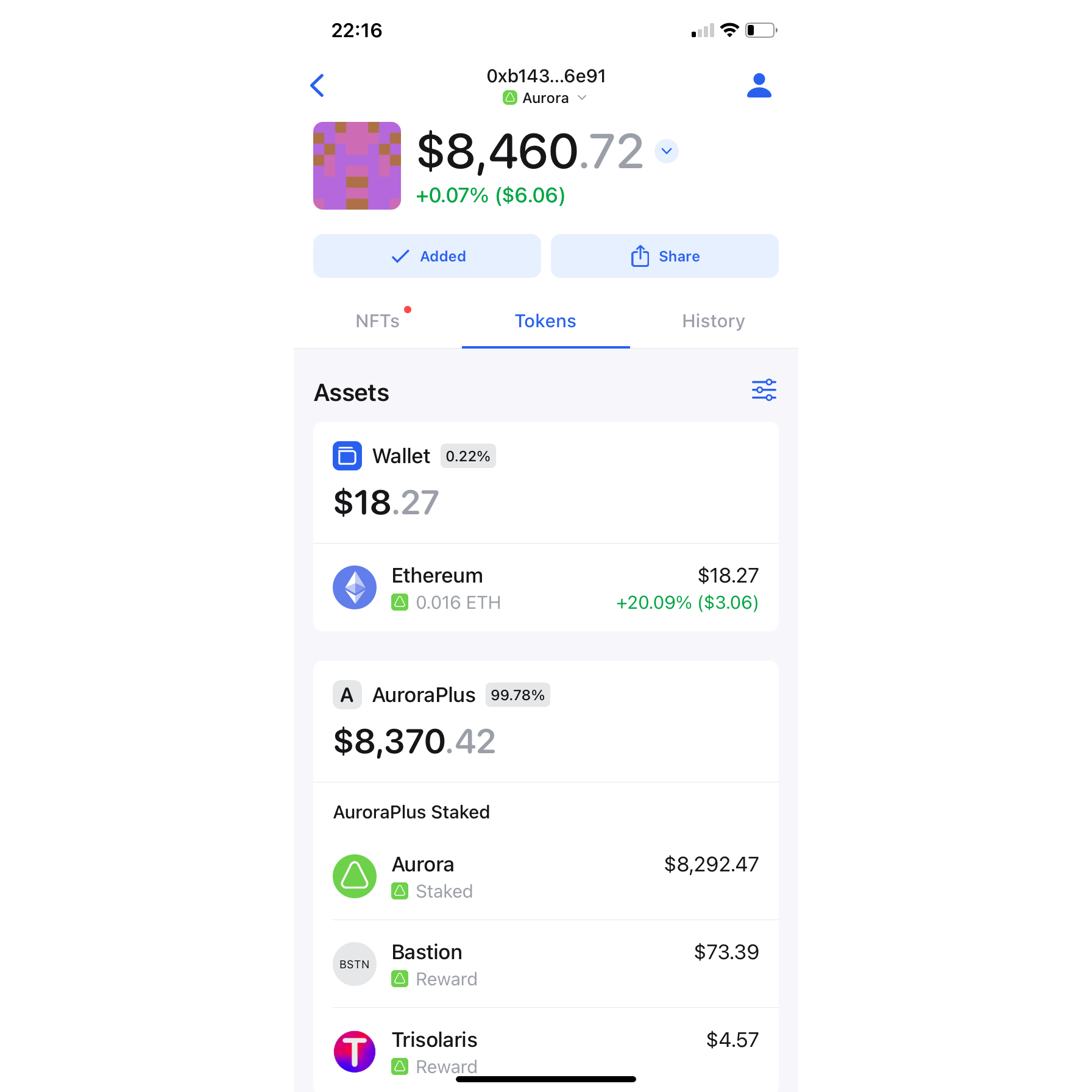
You can swap tokens directly in Zerion and it will help you find the best price from all DEXes. With Zerion, you can also sell any Liquidity Provider (LP) tokens right from the interface without having to first withdraw liquidity in the dapp.
Join Aurora
It’s very easy to get started with Aurora with a Zerion Wallet:
- Install the Zerion Wallet app.
- Create a wallet.
- Use Aurora’s official faucet to get some free ETH to pay gas fees (which are very low on Aurora).
- Find the best bridge with Zerion to transfer assets from Ethereum or other EVM-compatible networks.
Get Zerion Wallet for Aurora
And once you get Zerion Wallet, claim Zerion DNA, a unique living NFT that changes with your on-chain actions.

